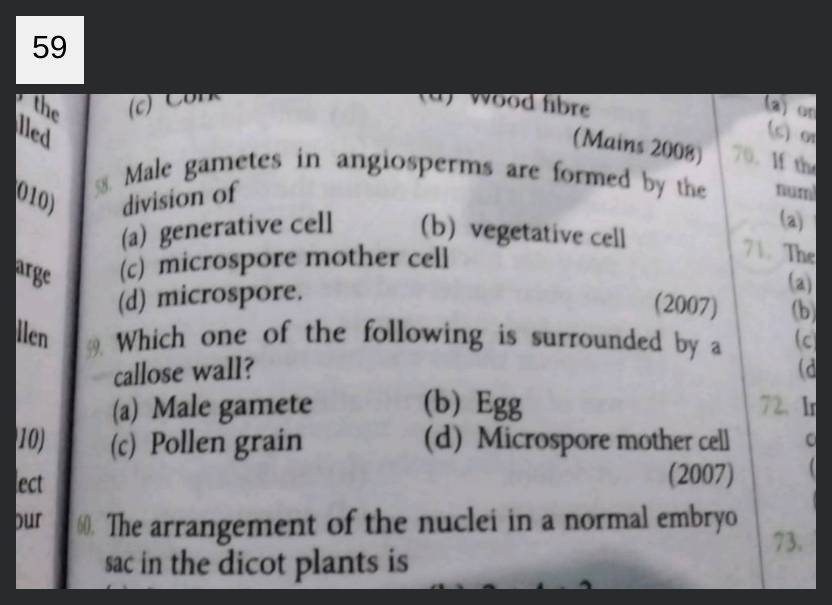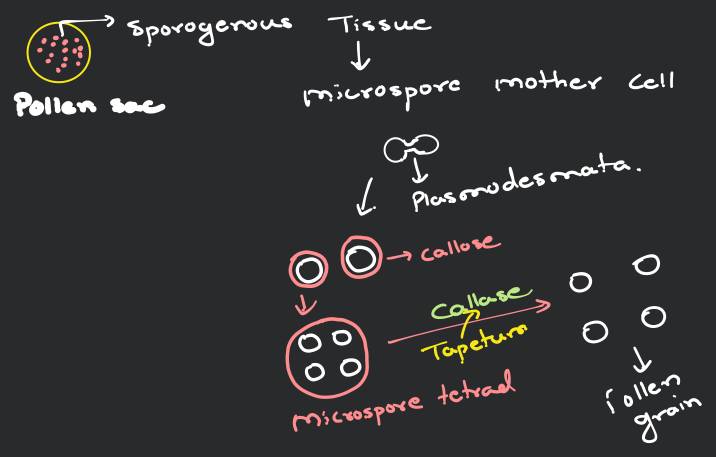Question
Medium
Male gametes in angiosperms are formed by the division of :
Found 6 tutors discussing this question
Discuss this question LIVE
5 mins ago
 Text solution
Text solution Verified
Verified
In the pollen sac (microsporangium) of the anther, haploid microspores are formed by mitosis. Mitosis then follows to produce a two-celled pollen grain with a small generative cell and a large vegetative cell. This generative cell will undergo further mitosis to form two male gametes (nuclei). The pollen tube grows through a spore in the pollen grain, with the tube (vegetative) nucleus at its tips and the male nuclei behind.
Was this solution helpful?
12
Share
Report

One destination to cover all your homework and assignment needs
Learn Practice Revision Succeed

Instant 1:1 help, 24x7
60, 000+ Expert tutors

Textbook solutions
Big idea maths, McGraw-Hill Education etc

Essay review
Get expert feedback on your essay

Schedule classes
High dosage tutoring from Dedicated 3 experts
Practice more questions from Sexual Reproduction in Flowering Plants
Question 2
Hard
Views: 6,125
(ii) When do farmers prefer using apomictic seeds?
Practice questions on similar concepts asked by Filo students
Question 1
Views: 5,799
Question 2
Views: 5,654
Question 3
Views: 5,945
Question 4
Views: 5,622


Stuck on the question or explanation?
Connect with our Biology tutors online and get step by step solution of this question.
231 students are taking LIVE classes
| Question Text | Male gametes in angiosperms are formed by the division of : |
| Updated On | Apr 24, 2023 |
| Topic | Sexual Reproduction in Flowering Plants |
| Subject | Biology |
| Class | Class 12 |
| Answer Type | Text solution:1 Video solution: 1 |
| Upvotes | 78 |
| Avg. Video Duration | 3 min |







